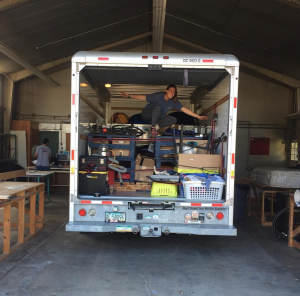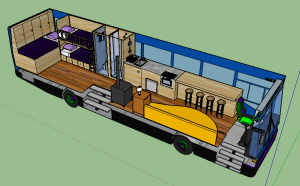THIMBY is well on its way through construction: design decisions have been finalized, walls have risen, and the most exciting part to many is yet to come — populating the inside of the house with appliances and furniture to make it functional and liveable. But what has to come before any of that? The electrical system! And trust us, it’s much more exciting than just what makes the rest of the house run.
If you haven’t designed an electrical system before, you might be wondering how that process even begins. Well, first our design team needed to estimate the demand, or the amount of electricity that will be needed to serve the devices plugged in. To do this we had to consider:
- Major appliances in the house
- Heating and cooking with electricity?
- How much flexibility is there in demand?
- What kind of weather/climate will the house be in?
- How much of a solar resource will the house have access to, or how much sun will it get?
After we estimated the demand, we were ready to begin sizing components since we knew how much electricity we needed (roughly). But…what parts even go into a solar photovoltaic (PV) system?

What’s so exciting about our electrical system — other than the fact that it’s capable of operating both on-grid and off-grid — is the specific components we integrated into our system.
Through our partnership with Platt Electric Supply, we were given not only the electrical components for wiring the house’s circuits, but also the StorEdge system for managing the flow of electricity among solar modules, grid, battery, and loads in the house. The newest technology from SolarEdge, this system combines the functionality of the combiner box, charge controller, and inverter in one smart system that keeps all components of the electrical system working optimally. Though they were designed for use in a house that has a connection to the electrical grid, we will demonstrate that they can work in an off-grid house on wheels.
Moreover, Platt donated solar racking pieces from Iron Ridge to help us mount all of the modules and tilt them towards the sun through changing seasons. We’ve worked with our partners to modify the racking components from what they were designed for, allowing us to make use of nearly the whole area of the roof to generate electricity.
So what’s to come next? Finishing up wiring, installing insulation, racking and mounting the solar panels, and installing the battery — but one step at a time!




